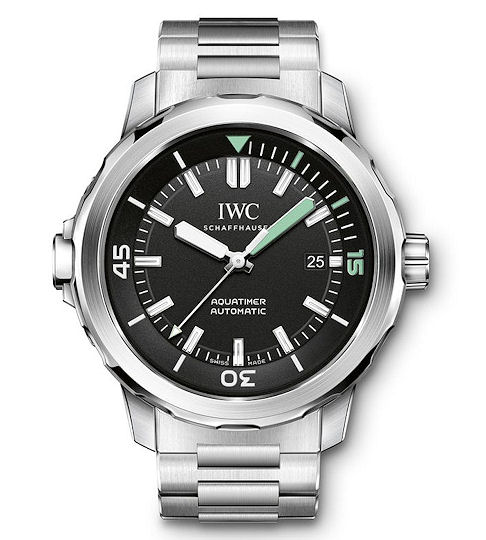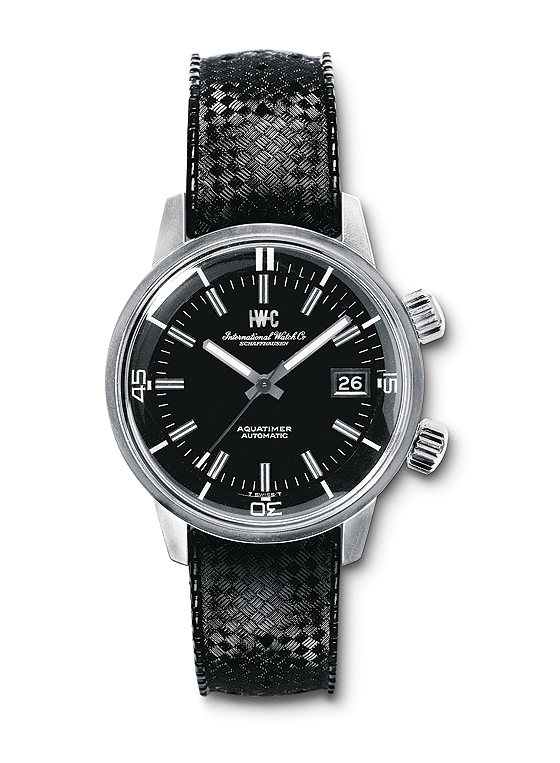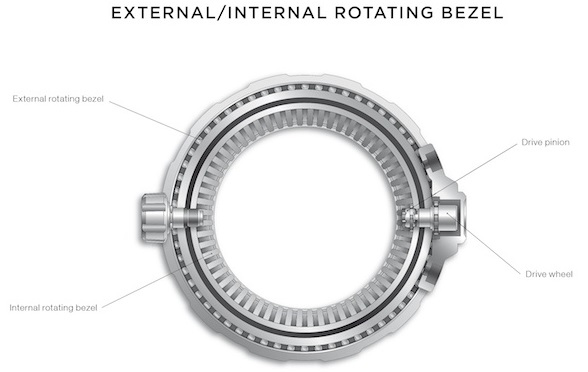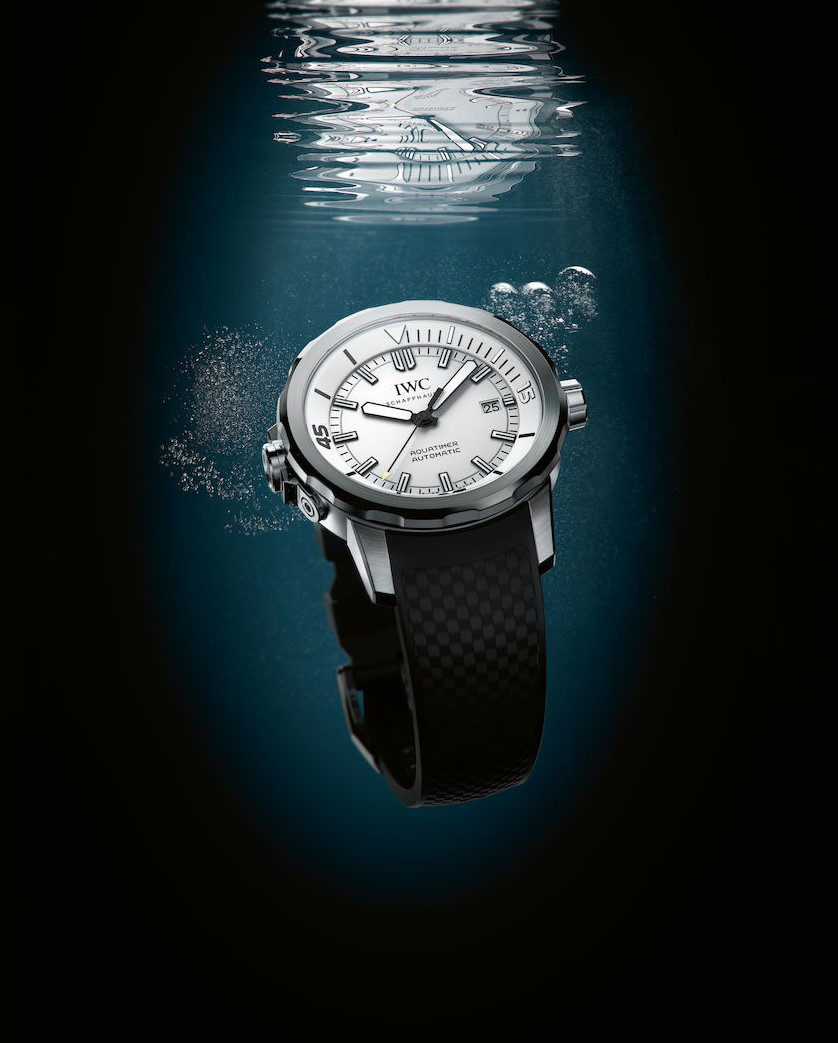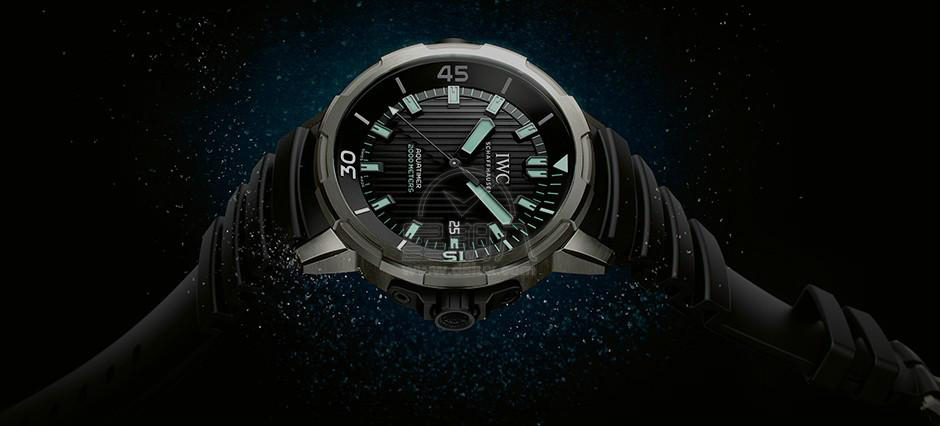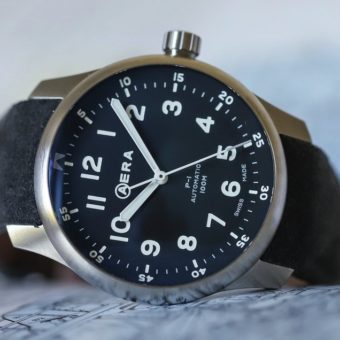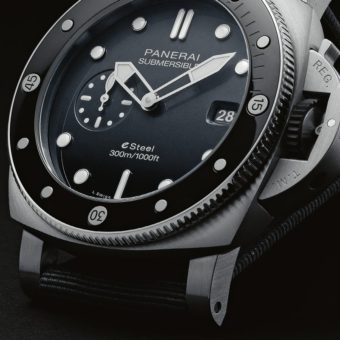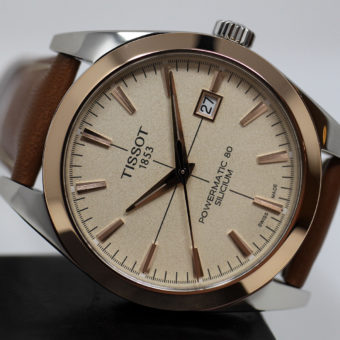Many brands across the world of horology have devoted a great deal of resources and effort into developing new, modern watches with historical flairs. Some brands, such as Omega and Tudor, have developed entire collections from their vintage inspirations; others, like Zodiac and Longines, have worked just as to hard to re-create some of their most beloved and famous watches as individual models. Along with these, there are still many examples of watches that are rooted strongly in a particular brand’s history but have since evolved far from their original designs. Here I am thinking of newer collections by Rolex, interesting modern pieces by TAG Heuer, and the line we’ll be covering today — the IWC Aquatimer.
The IWC Aquatimer, founded originally as a line of Super Compressor-style watches in 1967, was a series of casual diving pieces developed by IWC to cater to the growing hobby of recreational diving. Reliable to about 200 meters and characterized by signature Super Compressor traits like an internal rotating bezel, two screw-down crowns, and a utilitarian steel case, the watch (below) planted a firm foundation for the Aquatimer lineage. However, while the piece was unique in its own right, the popularity of the Super Compressor style of watches was slowly by the 1970s. Thus, IWC has drastically revamped the Aquatimer line on multiple occasions over the years, finally settling on a style, in the late ‘90s and early ‘00s, that brings us closest to the familiar Aquatimer produced by the brand today. The modern design, notable through a variety of distinct elements, does continue to pay subtle homage towards its almost half-century history, albeit largely shrouded behind the timepiece’s more contemporary features.
The most basic version of today’s Aquatimer (Ref. IW329001), which was revamped in 2014 and launched at that year’s SIHH, has a 42-mm steel case, which sits thick upon the wrist at 14 mm. The watch uses an IWC-developed technology called a SafeDive system, which explains what appears to be a second crown of the left side of the case, but is actually a part of a larger pinion system that helps integrate the internal and external rotating-bezel system. The purpose of this system (illustrated below) is to combine the benefits of an internal bezel (better visibility, and resistance to pressure), with the benefits of an external bezel (enhanced structural support, easier adjustment).
Taking a closer look at the black or silver-plated dial, you will notice the internal rotating bezel we discussed before, visible tick marks for the hour indices, and a relatively large IWC logo toward the 12 o’clock mark. You should also notice the subtle date indicator at the 3 o’clock mark, the wide hour and minute hands, and the arrow-pointer seconds hand. Powering the piece is the automatic IWC Caliber 30120, which uses an ETA 2892-A2 movement as its base and has a power reserve around 42 hours. This piece is currently listed by IWC at $5,400.
As the Aquatimer is one of the more modern-looking pieces in IWC’s collection, some of its historical features and inspirations may not be as obvious compared to those of other watches. Of course, in comparison to pieces within the Aquatimer series produced in the past 20 years or so, the bulky, masculine characteristics are more noticeable. But what about in comparison to older models, or even to the original Super Compressor design of the late ‘60s?
In this area, you can still notice a few elements providing a historical link to the originals. Note the design of the hour markers, specifically how the early models used double tick marks whereas the contemporary reference follows the same aesthetic but without two separate applied indices for each hour. Also take notice of the general attributes of the lugs, strap, and dial features, all of which display commonalities between the vintage and modern versions. The lugs, while shorter in the modern watch, still maintain a slight angle when integrating with the strap. The strap itself is still available in rubber, with almost the same pattern as the original. The modern watch — while now using an outer bezel to move the inner one, as well taking advantage of contemporary finishing techniques — still can be regarded as a modern take on the Super Compressor, even without the double screw-down crowns. There are still other shared qualities: the wide hour and minute hands, the placement of the corporate logo and descriptions, and, lastly, the date indicator.
What is interesting about the modern IWC Aquatimer is how historically disconnected it might seem from its historical lineage at first glance, yet has really taken many of its original elements and steadily adjusted them toward more contemporary tastes. We see this reflected in the increase of the case size, from around 37 mm to 42 mm in diameter; in the modern inner/outer bezel system; and in several other slight changes that characterize this modern watch. Now I can only wonder if IWC, for its next revision of the Aquatimer series, will continue adding more modern elements or if it will instead steer it towards a path similar to that of its Pilot’s Watch series. Could consumers one day see a vintage-faithful IWC Super Compressor, or even a fully outer bezel-equipped Aquatimer? Only time — and another SIHH or two — will tell.
For our most recent article, in which I compare the modern Omega Speedmaster Mark II to its vintage counterpart, click here.
Caleb Anderson is a freelance writer for various publications. Since first learning about horology, he has garnered extensive knowledge on vintage watches, and spends much of his time sharing his opinions within the field. Currently located near New York City, he is a persistent student in all things historical, a writer on many topics, and a casual runner.

